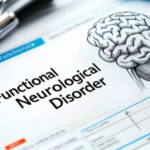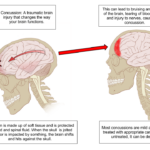Understanding the Importance of Exercise in Healing
Physical inactivity poses significant risks for chronic illness, with inactive individuals facing a 20 – 30% higher risk of premature death compared to active individuals, according to the World Health Organization. However, when injuries occur and movement becomes painful, rest may not always be the best course of action. In many cases, injuries and pain stem from muscular dysfunctions or imbalances. Simply resting can further weaken already affected muscles, exacerbating the situation. Instead, it’s crucial to focus on restoring muscular balance and function through individually prescribed exercise programs.
Research indicates that manual therapies, when combined with exercise, are more effective and help prevent injury recurrence. Consistency is key to any exercise program. Your body requires regular stimulation to become stronger and more functional, making your commitment vital to the healing process. Consult your healthcare provider not only for ideal exercise selection but also to learn how to support your progress by incorporating selected exercises into your daily routine at home, thereby increasing exercise frequency.
Home exercise programs need not be time-consuming or require expensive equipment. Even a consistent 5 to 10-minute program, performed 3 to 5 times per week, can yield better results than longer workouts at a gym. So, don’t hesitate—ask your healthcare provider to help you initiate an exercise program tailored to your needs. Investing just a few minutes a day in exercise can significantly contribute to a happier and healthier future.
- Risk of Chronic Illness and Premature Death: The World Health Organization underscores the grave risks associated with physical inactivity. Inactive individuals face a considerably higher risk of chronic illnesses such as heart disease, diabetes, and certain cancers. Moreover, they have a 20 – 30% higher likelihood of premature death compared to those who engage in regular physical activity. This highlights the critical role exercise plays in maintaining overall health and longevity.
- Reconsidering Rest in the Face of Injury: While rest may seem like the instinctive response to injury or pain, it’s not always the most effective approach. In many cases, injuries and pain stem from muscular dysfunctions or imbalances. Simply resting can further weaken already affected muscles, exacerbating the situation. Instead, it’s essential to address these issues directly by focusing on restoring muscular balance and function through individually prescribed exercise programs.
- Effectiveness of Combined Therapies: Research indicates that combining manual therapies, such as massage or physical therapy, with exercise yields superior results. Manual therapies can provide immediate relief from discomfort and prepare the body for exercise, while targeted exercises address underlying issues and promote long-term healing. This integrated approach not only enhances recovery but also helps prevent future injury recurrence.
- Consistency as a Key Component: Consistency is fundamental to the success of any exercise program. Regular stimulation is necessary for the body to adapt, become stronger, and improve functionality. Therefore, your commitment to adhering to the prescribed exercise regimen is vital for the healing process. By consistently engaging in exercise, you provide your body with the stimulus it needs to heal and thrive.
- Guidance from Healthcare Providers: Consulting with your healthcare provider is crucial when initiating an exercise program, especially if you’re dealing with an injury or medical condition. They can recommend ideal exercises tailored to your specific needs and limitations. Moreover, they can provide guidance on how to incorporate these exercises into your daily routine at home, thereby increasing the frequency and effectiveness of your workouts.
- Accessibility of Home Exercise Programs: Home exercise programs offer a convenient and accessible way to engage in physical activity. They need not be time-consuming or require expensive equipment. Even a short, consistent program, lasting 5 to 10 minutes and performed 3 to 5 times per week, can yield significant results. This makes exercise more feasible for individuals with busy schedules or limited access to gym facilities.
- Investment in Long-Term Health: By initiating and maintaining an exercise program, you’re investing in your long-term health and well-being. Even dedicating a few minutes a day to exercise can have a profound impact on your overall health, reducing pain, improving function, and enhancing your quality of life. So, don’t hesitate to ask your healthcare provider for assistance in designing an exercise program tailored to your needs. The benefits far outweigh the investment of time and effort.
Exercise plays a critical role in healing and maintaining overall health. By addressing muscular imbalances, combining therapies, maintaining consistency, seeking guidance from healthcare providers, and embracing home exercise programs, individuals can significantly contribute to their own healing and lead happier, healthier lives.






